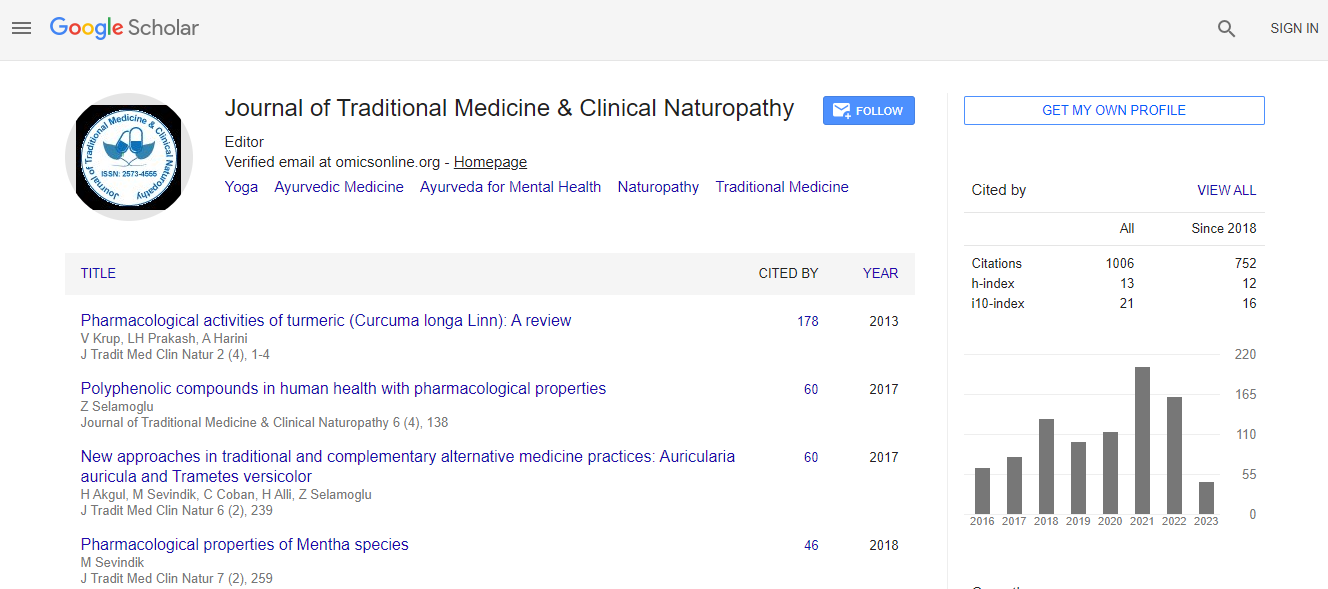Brief Note on Traditional African Medicine
*Corresponding Author:
Copyright: © 2021 . This is an open-access article distributed under the terms of the Creative Commons Attribution License, which permits unrestricted use, distribution, and reproduction in any medium, provided the original author and source are credited.
Abstract
The turn of events and utilization of customary natural medication (THM) have a very long chronicled foundation that relates to the measure of your time. Inside the mainland of Africa, the act of conventional mending and wizardry is way more established than assortment of the other customary clinical sciences and is by all accounts undeniably more common contrasted with customary medication. African customary medication may be a type of all encompassing medical care framework that is coordinated into three degrees of claim to fame, which incorporate divination, mysticism, and herbalism, however these may cover in certain circumstances. Concept of sickness and disease In African customary setting, there was consistently a proof on why somebody was influenced by a chose infection at a particular time. In sync with Ayodele, sicknesses for the most part rotate around black magic/witchcraft, divine beings or progenitors, normal, still as acquired. Ailment inside the African culture is not the same as the allopathic Western medication perspective. Ailment is accepted to be of regular, social, or social beginning. Social or social sickness is accepted to be identified with extraordinary causes like incensed spirits, black magic, or outsider/fiendish spirits, in any event, for conditions presently known to be perceived in current medication like hypertension, sickle-cell pallor, cardiomyopathies, and diabetes. African conventional convictions consider the animal as being comprised of physical, otherworldly, good, and friendly perspectives. The working of these three viewpoints harmonical implied physiological state, while if any angle ought to be out of equilibrium, it connoted affliction. Consequently, the treatment of an evil individual includes helping his/her actual being however may also include the profound, good, and friendly parts of being besides. Bark—The external defensive layer of the tree stem or trunk. It contains exceptionally focused phytochemicals with significant restorative properties. Assortment of plants have barks of high restorative worth. Roots—i.e., the meaty or woody foundations of the different African plant species are therapeutic. The majority of the dynamic fixings are generally sequestered inside the establishment bark as opposed to the woody internal part. Tubers—Swollen meaty underground designs which structure from stems/roots, e.g., potatoes and sweet potatoes like Dioscorea dumetorum (ona-(igbo)) for diabetes and climbing lily for malignancy. Bulbs—A bulb is an underground design made of various leaves of plump scales, e.g., Allium sativa (garlic) and liliaceous plant (onions). Rhizomes—Woody or plump underground stem that develops evenly and draws out their leaves over the underside, e.g., stem (ginger), which is used for respiratory issues; Imperata cylindrica (skewer grass) for strength in men and herbaceous plant (turmeric), a cancer prevention agent, mitigating, and anticancer medication. Tubers—Swollen plump underground constructions which structure from stems/roots, e.g., potatoes and sweet potatoes like Dioscorea dumetorum (ona-(igbo)) for diabetes and gloriosa for malignant growth.

 Spanish
Spanish  Chinese
Chinese  Russian
Russian  German
German  French
French  Japanese
Japanese  Portuguese
Portuguese  Hindi
Hindi 
